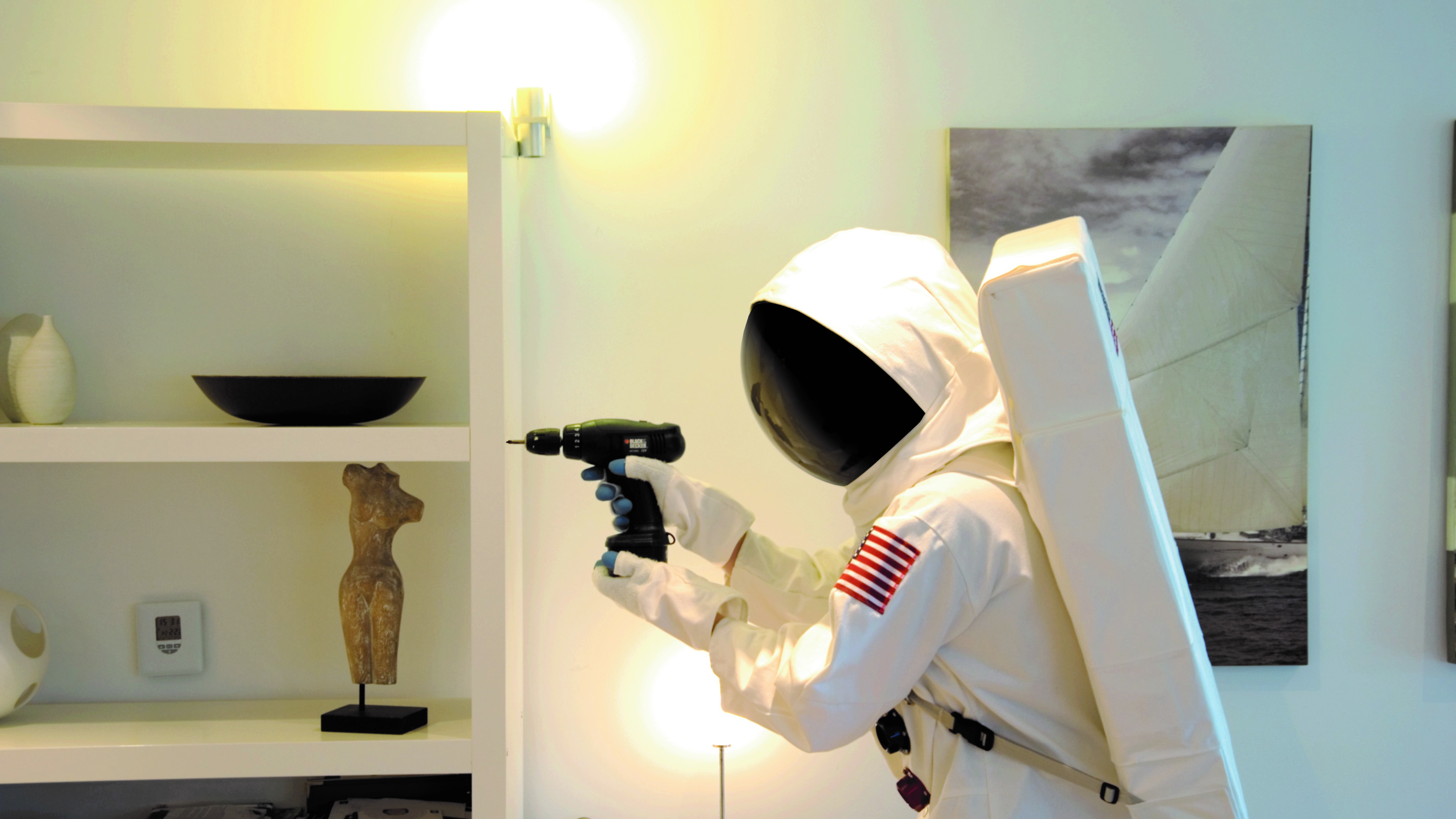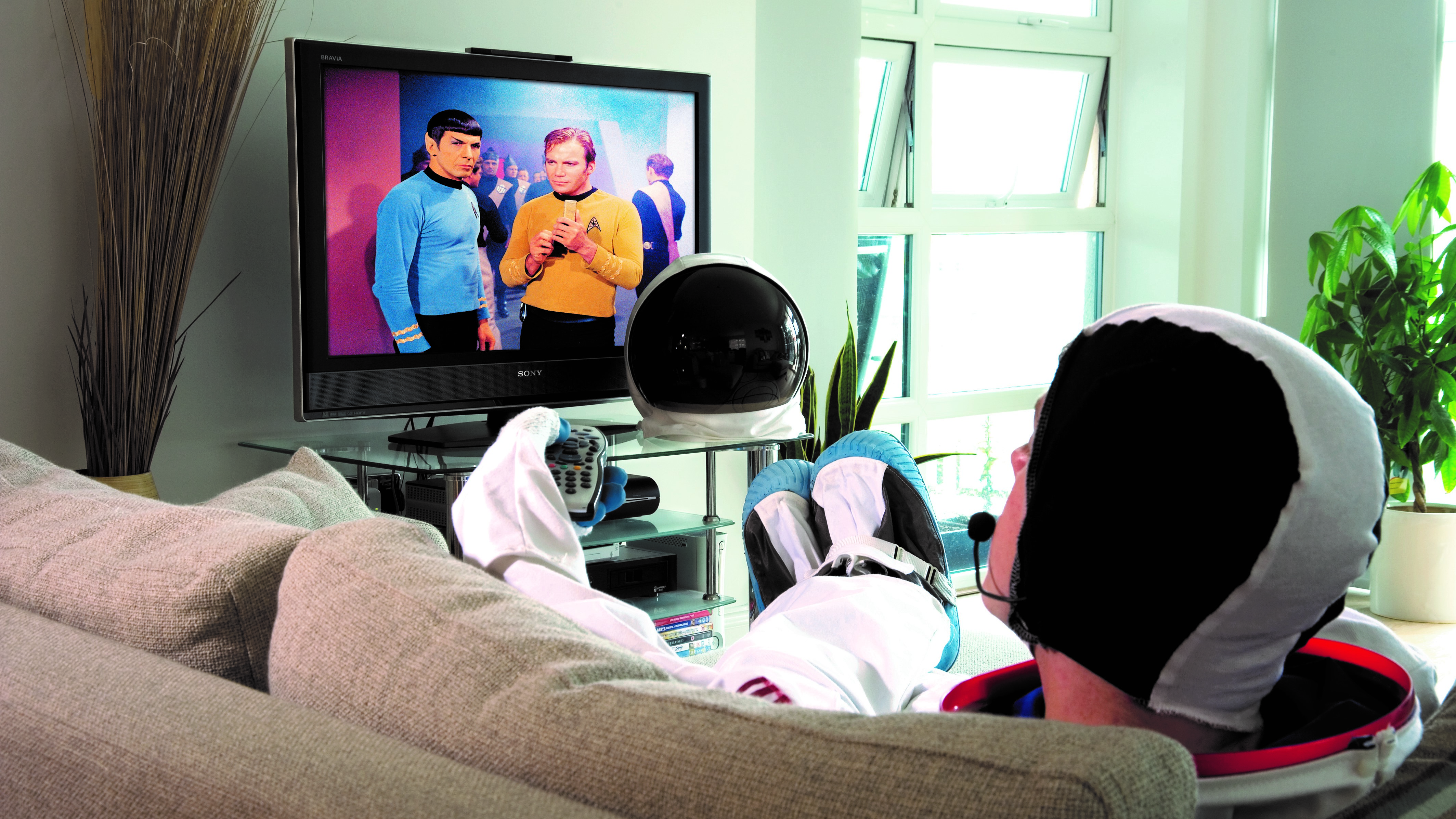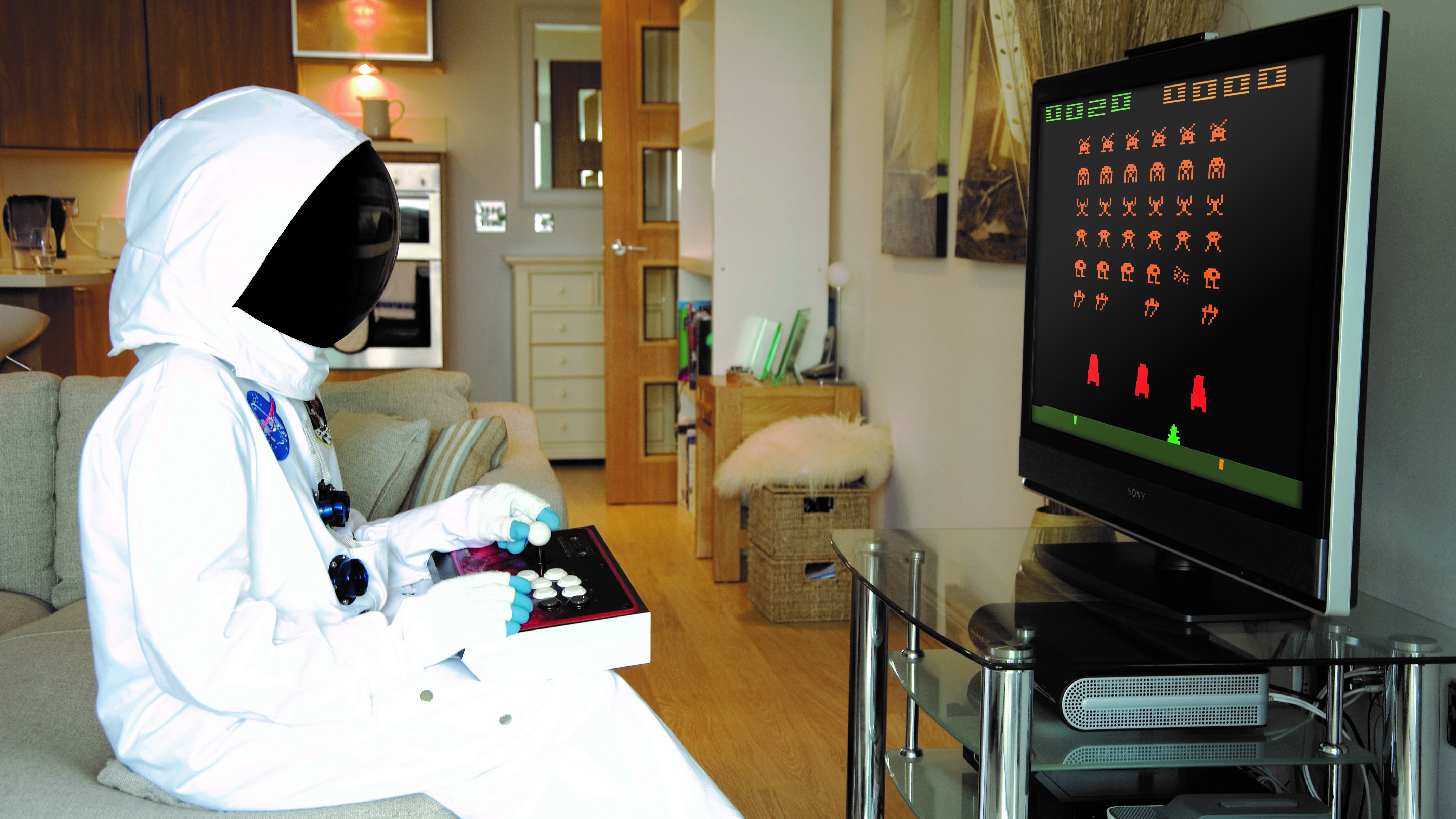10 everyday NASA inventions and spin-offs you can find in your home
Bound by its motto "for the benefit of all" since its formation NASA has had an obligation to foster and transfer its technological and scientific breakthroughs to the public and commercial spheres

Many tools, machines and facilities within your home have their origins in research undertaken by NASA over the past 50 years.
Technology originally designed to aid space exploration and land a human on the moon — an endeavor instigated by U.S. President John F. Kennedy in 1961, where he announced a series of exciting new missions including the groundbreaking Apollo program, has been successfully spun off to create some of the staple day-to-day products we now take for granted.
From golf balls to gamepads and computers to crash helmets, NASA's technology has been picked up and adapted by specialist companies who have brought it into the public commercial sphere, delivering new and revolutionary products that have transformed how people live their lives and interact with their environment.
Throughout this article, we delve deep into the NASA archives to discover the innovative research and inventions that made ten of the most common everyday household products possible.
Related: Who invented the telescope?
Water filters
Spin-off from: Spacecraft filtration
Mission: Apollo program
Date: 1963 to 1972
Although basic water filters had existed since the mid-1950s, it wasn't until NASA pumped resources into its research for the Apollo program in 1963 that modern filtration systems began to emerge. NASA led research into this area as large quantities of water would need to be kept uncontaminated for long periods of time in extreme conditions.
To achieve this goal, NASA developed a system that worked by utilizing charcoal's ability to absorb pollutants and particulate matter present within the water when specially treated. This treatment — essentially an oxidization process that opens up millions of tiny pores between carbon atoms in the charcoal — amplified the absorbability of the charcoal, which with its large, porous surface area provided many sites for pollutants to chemically bond with it through attraction. This left the resultant water clear of impurities.
Microprocessors

Spin-off from: Integrated circuits
Mission: Apollo program
Date: 1963 to 1972
NASA technically didn't invent the integrated circuit, credited to electrical engineer Jack Kilby in 1958, but instead invented newer and more advanced variants of it. Indeed, it's easily argued that NASA's Apollo program kickstarted the microchip revolution, with the administration buying more than 60 percent of America's integrated circuits throughout the whole of the 1960s, deliberately allowing the industry to acclimatize itself to mass production and stabilizing it while few other markets existed.
One of the first high-profile usages of microchip technology was in the Apollo Guidance Computer with its DSKY interface, which was used to provide onboard computation and control for navigation, as well as control over the Command Module and Lunar Module. Today, integrated circuits can be found in almost every area of life, from mobile phones and personal computers to microwaves and calculators, mainly thanks to the cheap processing and manufacture of microchips worldwide.
Crash helmets
Spin-off from: Impact-absorbing foam
Mission: Apollo program
Date: 1970s
In the 1970s NASA invented temper foam, a shock-absorbing material designed to improve the safety of aircraft cushions. The foam was fitted to the helmets and seats of its Apollo spacecraft, a lining that would help mitigate some of the extreme forces astronauts would be subjected to.
Temper foam is a polyurethane treated with additional chemicals that has both high viscosity and density, properties ideal for absorbing significant impacts and resisting energy flow. The foam is viscoelastic and temperature sensitive, meaning that when pressed against a heat source, such as a human. it molds to that shape, aiding fit and reducing unwanted gaps.
Temper foam was released into the public sphere in the early 1980s, soon being picked up and utilized in medical equipment such as temper foam mattresses and sports equipment such as American football helmets and cycle helmets
Cordless tools

Spin-off from: Cordless zero-impact wrench
Mission: Project Gemini, Apollo program
Date: mid-1960s
After Kennedy announced the Apollo program in 1961, a deluge of research commenced into the practicalities of human spaceflight. One of the most notable breakthroughs was NASA's collaborative invention with tool company Black+Decker into a cordless zero-impact wrench, a tool that could spin bolts in zero gravity without spinning the astronaut. From this, the research program developed cordless tools for a variety of purposes, including a cordless rotary hammer drill that could be used for extracting rock from the moon's surface.
These tools worked by exploiting the emerging technology of smallscale rechargeable electrochemical cells that could be grouped to form a battery pack capable of delivering enough power to generate the requisite amount of torque necessary to bore into the moon's surface crust. Today this technology has become common and widespread, with the majority of tools operating off a cordless battery pack that can be recharged between uses. Interestingly, it was directly from the research done by NASA in the 1960s that Black+Decker developed the cordless 'Dust Buster' handheld vacuum cleaner.
Scratch resistant lenses
Spin-off from: Scratch-resistant spacesuit visor and scratch-proof glass and plastic coatings
Mission: Apollo program
Date: 1963 to 1972
After NASA realized that plastics were a lot better at absorbing ultraviolet light and didn't shatter if dropped, space visors were produced using plastic. However, uncoated plastic easily scratched, and considering the amount of dust and rubble in a space environment, it was determined scratchproof lenses and coatings needed to be developed.
Due to NASA's research, space visors are now coated with diamondlike carbon coatings that are applied in thin films to the outside of the visor and toughen it massively. An offshoot of this technology is now available on Ray-Ban sunglasses, while Foster Grant historically bought the license to replicate early coatings to apply to its entire range.
Household smoke detector
Spin-off from: Adjustable smoke detector
Mission: Skylab
Date: 1973
The smoke detector, while invented by Francis Robbins Upton in 1890, wasn't adjustable until NASA invented a model with variable sensitivity in 1973. The units were installed on Skylab to detect toxic vapors on board.
They worked through ionization, a process that involves using a small quantity of the radioactive isotope americium-241 to ionize oxygen and nitrogen atoms in a detector's embedded air chamber, which itself is topped and bottomed with two metal plates attached to the battery. While ionization occurs, the freed electrons are attracted to the plate with a positive voltage plate and the electronless atoms to the negative voltage plate, creating an electric current. When smoke particles from a fire enter the air chamber, they disrupt the current as they attach to the ions and neutralize them. The smoke detector senses the drop in current and sets off the alarm.
Satellite television

Spin-off from: Satellite communication
Mission: Telstar
Date: 1962
The first satellite capable of relaying TV signals was Telstar 1. Launched in 1962, it was a joint project to develop an experimental satellite communications system over the Atlantic Ocean. The satellite was built by Bell Laboratories in partnership with NASA.
The satellite worked by utilizing a transponder to relay data. It received microwave signals through an omnidirectional array of small antennae before upscaling and amplifying the signal's frequency in a traveling-wave tube and retransmitting to the ground. NASA continued to develop this technology, producing more advanced systems to reduce noise and errors in transmitted signals, leading to the ability to transmit high-definition video and audio.
Shoe insoles
Spin-off from: Lunar boots
Mission: Apollo program
Date: 1963 to 1972
One of the most notable inventions NASA included in its spacesuits was its special 3D 'spacer' material in the boots for cushioning and ventilation. Used to give astronauts better control, agility and longevity while on their feet, the lunar boot was an overshoe that slipped on over the integral pressure boot of the spacesuit.
The outer layer was made from metal-woven fabric, except for the ribbed silicone rubber sole that provided extra springiness and comfort while moonwalking. The tongue area was made from Teflon-coated glass-fiber cloth, while the inner layers were made from this, followed by 25 alternating layers of Kapton film to form an efficient, lightweight thermal insulation. From this, shoe manufacturers created a series of lightweight, warm and springy running shoes and trainers that are now on sale worldwide in high-street shops.
Modern golf ball dimples
Spin-off from: Drag-resistant surfaces
Mission: Space Shuttle
Date: 1981
As part of the Space Shuttle program, NASA researched maximizing the drag resistance of its new launch system's surfaces, especially for the external fuel tank. The special dimpled surface applied to the tank allowed NASA to hit a more optimum lift-to-drag ratio, getting more distance and stability out of its launch.
After being released into the public sphere, this aerodynamic coating was studied by the Wilson Sporting Goods Company. Its engineers learned that by applying dimples to the surface of a golf ball, the ball could glide more smoothly with less aerodynamic drag. With 3D computer graphic software, the Wilson engineers were able to predict the progress made for the new golf ball and designed one with medium-sized dimples that created both high lift and increased gliding potential. Today, all golf balls utilize this dimpled coating.
Joysticks

Spin-off from: Apollo lunar lander
Mission: Apollo 15 to 17
Date: 1971 to 1972
As with smoke detectors, joysticks already existed before NASA picked up the technology, but they were unrecognizable from the products we see today. Indeed, it was only through NASA's work on joystick technology as a control mechanism for its Apollo lunar rover, which would be used in the last three Apollo missions to the moon, that we have the digital joystick and thumbstick technology we see in cars, planes and video game control pads.
The lunar rover's controller was a T-shaped joystick and worked through a series of motors — four for driving and two for steering. Moving the stick forward powered the rover forward, left and right turned the vehicle left or right and pulling backward activated the brakes. Activating a switch on the joystick before pulling back would put the lunar rover into reverse while pulling the handle all the way back activated a parking brake.
Join our Space Forums to keep talking space on the latest missions, night sky and more! And if you have a news tip, correction or comment, let us know at: community@space.com.
Get the Space.com Newsletter
Breaking space news, the latest updates on rocket launches, skywatching events and more!

All About Space is where stunning images combine with accessible and authoritative text to educate and inspire readers of all ages while taking them on a spectacular journey through the Solar System to the known limits of the universe. Characterized by quality and accessibility All About Space is a brand dedicated to delivering expert commentary on the latest cutting-edge research, technology and theories in an entertaining and visually stunning way.
Get fantastic offers by subscribing to the digital and/or print edition now. Subscribers get 13 issues per year!
-
CommonSenseNow Amazing how gullible people are to believe this complete load of BS. Every one of these things existed long before NASA used them, not one of them is a "spin-off" of any space program. I am amazed that they didn't trot out Tang as another fake justification for spending trillions of dollars worth nothing but pictures in return.Reply -
Unclear Engineer And I am surprised the article didn't mention Corelle dishes. The story has been that it was a commercial outgrowth of Corning Glass working on heat shields for atmospheric reentry vehicles.Reply
I don't think there is any way to deny that government projects infuse money into commercial company research and development efforts, which then produce items of interest to the government programs, such as weapons and research instruments, that then find applications in commercial products.
This process courses through much of human "advancement", including nuclear energy, space launch capability, computers, firearms, etc. at the more obvious levels, but also less obvious things like foods and waste treatment processes.
It is ludicrous to say that all that NASA has provided for trillions of dollars is "pictures". Do you use Google Maps to get directions? (Think GPS and satellite views). Do you use weather forecasts and severe storm warnings? Do you use the Internet to communicate with people who are not linked to you by undersea cables? Do you want to know what global warming emissions are really occurring in real time from what sources?
Yes, it would be possible to eliminate NASA and do the same things through military programs. But, is that what we want in a free society. The point is that government expenditures on science and technology do help raise our standard of living, even the expenditures on military equipment. -
Phillip Huggan I'll be stuck machine learning mostly social sciences for two years. Space is a good way to recognize innovation. Low footprint has been attracting investment for a few decades. Space also leads to new materials sciences. A mine in space is the big economic winner. Filters that clean Enceladus's fuel or airborne Hg have a jump thx to Apollo. I'd like to know whether to subsidize Telstar. The military equivalent is to subsidize Bombardier for war transport planes. With the former, you get a space mine and eventually other star systems. Subsidizing the military, you are always vulnerable to conventional WMDs on Earth as they aren't high enough IQ. You eventually get VTOL passenger jets...Reply
I'd like to learn ion engines for the USA, but it might be stolen, so it is safer to machine learn almost everything else privately for an employer. I hope to machine learning Blue Origin potential parts providers as well as space mine tech companies. The military can be the former; strangely enough IT can be both...the military won't focus on cosmic rays is my guess. I have plans for biolistics to spin off directed gene knockouts focusing charged radiation rays. Without going for the ion engine in the 1970s and particle imaging tech (only Russia has a school for neuroimaging psychology), the military has already ceded space to Barrow/Sagan-types by the 1980s.
In deep space, you want to have a rescue asteroid every LY. You may have to survive 5 yrs on your own ship's matter until then. In the military, you have the Germans defeated already. There isn't anyone or anything smart to challenge you. The militaries might get a gas giant moon mine here. Maybe not. But past 2075, I can't see them having the right Zeitgeist. Blue Origin traces its roots to the gold rush. NORAD is good but their antenna papers aren't made for surviving cosmic rays, meteorites or cold. NORAD's antenna microchips are meant for surviving EMPs, which is partway to Triton operations. They need thicker wires in their chips if cosmic rays. What path does NORAD/USA-A have to get from LEO war winner to Triton other than for security? -
Phillip Huggan Low footprint, knowledge+, and Q-of-L are what I'm trying to ML to avoid a tik-tok employer. The Army lost at the end of "All Quiet on...". Exo-suits good for them. The Navy may be important when we learn to filter space brine and find granite in space. I might bring W.Smith's craft back from Procyon with engineers/culturalists. The Air Force might make them. The Zeitgeist may be Science Fiction. I can only make Pluto-sized from an ice ball and rock. After that, GPR-able layers will be wanted and no volcanism. It might be ex-forces persons working for Blue Origin that dream of Earth-G designer worlds. NASA could make a ceramic Moon with doors opening and closing for the best theatre. That certainly isn't a military brain pan.Reply
